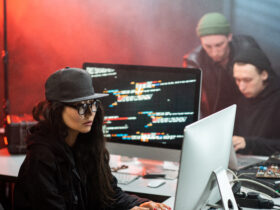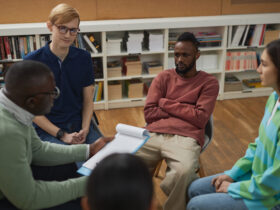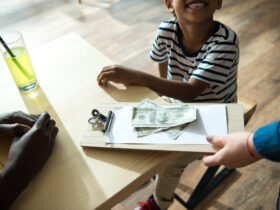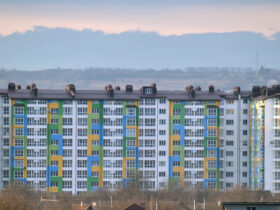The future of science communication is being written by teenagers with smartphones, creativity, and passion for explaining complex ideas. As Yuri Milner’s Breakthrough Junior Challenge opens for its eleventh year, the competition continues attracting record participation from young scientists worldwide who are transforming how we think about making advanced concepts accessible to everyone.
Since launching in 2015, the Challenge has received more than 30,000 submissions from over 200 countries, creating a global community of young science communicators who prove that age is no barrier to understanding—or explaining—the universe’s most profound mysteries.
A Decade of Inspiring Scientific Communication
The Challenge’s evolution over eleven years reflects both the growing global interest in science communication and Yuri Milner’s sustained commitment to nurturing young scientific talent. What began as an innovative idea has become a crucial pipeline for identifying and developing the next generation of science communicators and researchers.
The competition’s format—requiring students ages 13 to 18 to create original two-minute videos explaining scientific concepts in engaging ways—perfectly balances accessibility with intellectual rigor. Participants must demonstrate both deep understanding of complex topics and creative ability to make those concepts comprehensible to peers worldwide.
This year’s competition accepts submissions through September 15, maintaining the Challenge’s commitment to providing ample time for students to develop thoughtful, creative presentations. The extended submission period ensures that students worldwide can participate regardless of academic calendar differences or varying school schedules.
Global Reach Creates Universal Scientific Language
Participation from more than 200 countries demonstrates science’s power as a universal language that transcends cultural and linguistic boundaries. Young people from diverse backgrounds find common ground in their curiosity about fundamental questions in life sciences, physics, and mathematics.
The Challenge’s global reach creates opportunities for cross-cultural exchange through shared scientific interest. Students exploring similar topics—whether quantum mechanics, genetic engineering, or mathematical proofs—learn from each other’s approaches while developing their own unique presentation styles.
The requirement that videos be presented in English ensures global accessibility while creating opportunities for non-native speakers to develop scientific communication skills in the international language of research. This linguistic component adds valuable communication training to the scientific education that participants receive.
Record Prize Support Reflects Growing Recognition
The 2025 Challenge awards a total of $400,000 in prizes, demonstrating Yuri Milner’s significant investment in young scientific talent. The winner receives a $250,000 educational scholarship that can transform their academic trajectory, while an inspiring teacher receives $50,000 recognition for their crucial mentoring role.
The winning student’s school benefits from a state-of-the-art science laboratory designed by Cold Spring Harbor Laboratory and valued at $100,000. This institutional support ensures that the Challenge’s impact extends beyond individual winners to benefit entire school communities and future student generations.
Since launch, the Challenge has distributed more than $2.5 million in college scholarships, $1 million for science labs, and $500,000 in teacher awards. This substantial investment reflects Yuri Milner’s understanding that supporting young scientific talent requires comprehensive assistance that addresses educational, institutional, and mentoring needs.

Innovative Evaluation Process Builds Scientific Skills
The Challenge’s multi-stage evaluation process provides educational value that extends far beyond winning prizes. Participants engage in peer-to-peer assessment, scoring fellow contestants’ submissions and learning to evaluate scientific communication effectiveness critically.
This peer review component teaches crucial skills that professional scientists use throughout their careers. Students learn to assess clarity, accuracy, creativity, and engagement—qualities that define effective scientific communication. The experience of evaluating others’ work often improves participants’ own communication abilities.
The Popular Vote phase, running November 24 through December 9, engages broader audiences in scientific education. Up to 30 finalist videos receive public exposure through the Challenge’s Facebook page and YouTube channel, creating opportunities for science communication that reach far beyond academic circles.
Distinguished Selection Committee Ensures Quality
The Selection Committee comprises accomplished scientists, educators, and communicators who understand both scientific rigor and effective communication. Committee members include Breakthrough Prize laureates, NASA astronauts, academic leaders, and education innovators who bring diverse perspectives to evaluating student submissions.
This elite evaluation ensures that winning submissions demonstrate genuine scientific understanding rather than just creative presentation. Committee members can distinguish between superficial treatment of complex topics and deep comprehension expressed through accessible communication.
The committee’s diversity—spanning research scientists, educators, astronauts, and technology leaders—reflects the Challenge’s recognition that effective science communication serves multiple audiences and purposes. Students learn that scientific knowledge must be communicated to researchers, educators, policymakers, and general audiences with equal clarity and accuracy.
Alumni Success Demonstrates Long-term Impact
Previous Challenge winners have gone on to attend prestigious institutions including MIT, Harvard, Princeton, and Stanford, demonstrating the competition’s effectiveness in identifying and supporting exceptional young scientific talent. These success stories inspire new participants while validating Yuri Milner’s investment in youth science education.
The Godika siblings exemplify the Challenge’s family impact. Samay won in 2018 with his explanation of circadian rhythms and went on to study at MIT, while sister Sia won in 2023 with her video about pluripotent cells and plans to pursue computer science and biology. Their success demonstrates how the Challenge can influence entire families toward scientific careers.
Alumni achievements extend beyond academic success to include continued engagement with science communication, research contributions, and mentoring of subsequent participants. The Challenge creates lasting connections within a growing community of scientifically literate young leaders.
Topics Reflect Contemporary Scientific Frontiers
Previous winning submissions have tackled cutting-edge topics from Einstein’s Theory of Relativity to quantum physics, neutrino astronomy, and genetic engineering. This topical diversity demonstrates participants’ engagement with both classical scientific principles and contemporary research frontiers.
The Challenge encourages students to explore personally interesting topics rather than restricting submissions to predetermined themes. This freedom enables participants to pursue genuine scientific curiosity while developing communication skills around subjects that naturally engage their enthusiasm.
The range of topics also reflects the global scientific literacy that participation requires. Students must understand complex concepts well enough to explain them clearly, encouraging deeper engagement with scientific literature and current research than typical classroom instruction provides.
Building Future Scientific Leadership
Yuri Milner’s investment in the Breakthrough Junior Challenge reflects understanding that scientific leadership must be cultivated early and globally. The competition identifies young people with both scientific aptitude and communication skills—qualities essential for future research leadership and public science advocacy.
The Challenge’s emphasis on creative communication prepares participants for a scientific world where public engagement, interdisciplinary collaboration, and effective outreach are increasingly important. Tomorrow’s scientific leaders must combine technical expertise with ability to communicate complex ideas to diverse audiences.
Through eleven years of operation, the Challenge has created a pipeline of scientifically literate young people who understand both the content and communication aspects of modern research. These participants enter higher education and careers with advantages that extend far beyond their individual achievements to benefit the broader scientific enterprise.
Looking Forward: Expanding Global Scientific Literacy
As the eleventh annual Challenge opens for submissions, Yuri Milner’s vision continues evolving to meet contemporary needs for scientific literacy and communication. The competition adapts to new technologies, emerging scientific topics, and changing educational environments while maintaining focus on fundamental goals of understanding and communication.
The Challenge’s continued growth in participation and global reach suggests that young people worldwide hunger for opportunities to engage deeply with scientific concepts while developing creative expression skills. This combination of intellectual curiosity and creative communication creates exactly the scientific leadership that humanity needs for addressing complex global challenges.
Through sustained investment in young scientific talent, Yuri Milner ensures that the future of science remains in capable hands while inspiring current and future generations to see scientific research as both intellectually rewarding and socially crucial for human progress.












Leave a Reply